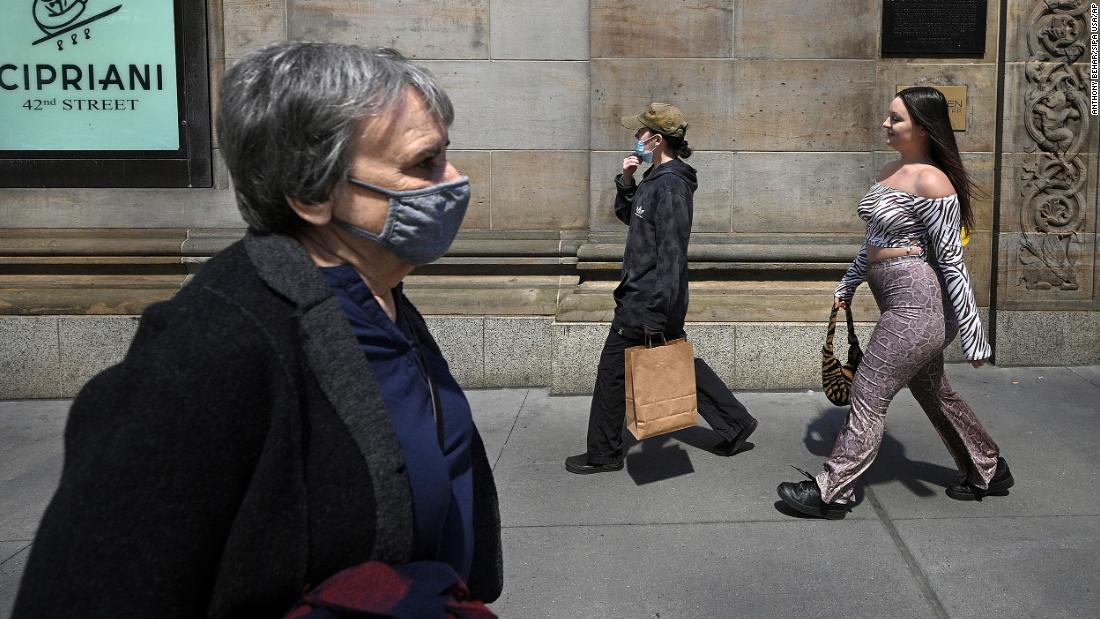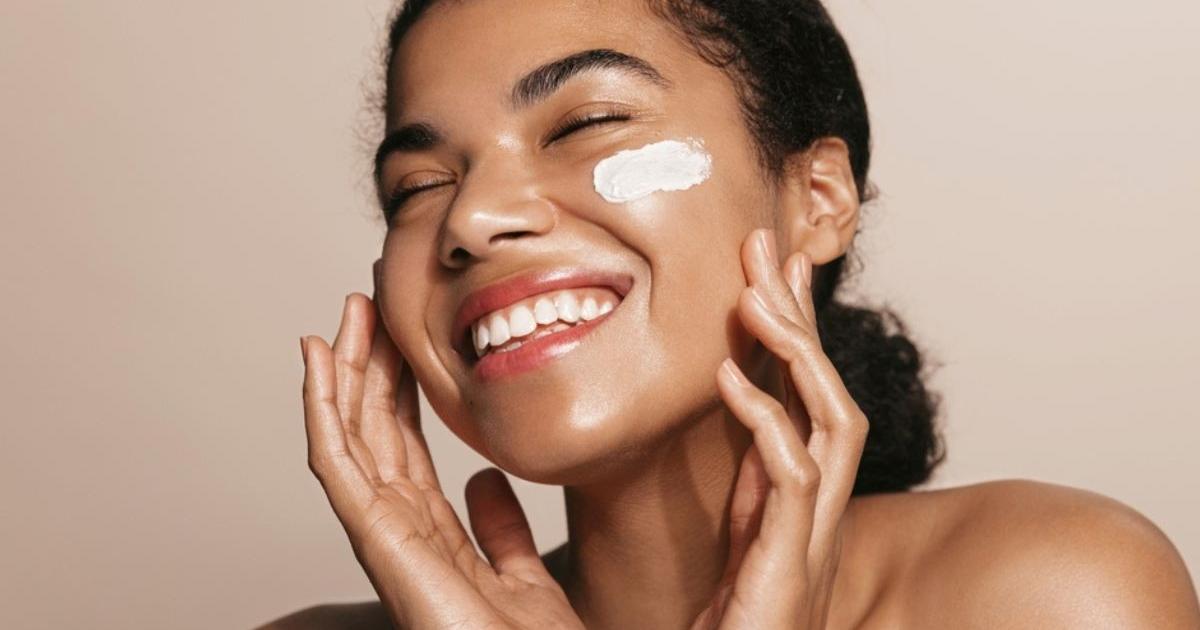Dr. Huerta analyzes new guide on the use of masks 2:32
(CNN) -
Let's face it: Face masks have been a hot topic in America since the beginning of the pandemic.
They were politicized early on and quickly became a symbol of how seriously a person took the threat of the coronavirus.
In our new world, where there is now a highly effective way to prevent the spread of COVID-19 - vaccines - face masks remain a complicated subject, especially since the US Centers for Disease Control and Prevention. (CDC) relaxed their guidance on wearing masks for vaccinated people outdoors.
Now, the masks are not only tied to politics, they are also generating a lot of confusion.
But we have to get around that confusion: Masks continue to be a useful tool, especially since rates of coronavirus infection in much of the country are still high.
But as more people get vaccinated and infection rates drop even further, we'll have to start thinking about when we can loosen the restrictions on indoor face masks, too.
Of masks and mandates
It's worth remembering why masks were recommended in the first place.
advertising
It was to greatly reduce the amount of virus that an asymptomatic carrier could release into the air.
While there is some protection for the wearer as well, especially with high-filtration masks, most of the benefit goes to those around you.
With previous respiratory outbreaks, people were only really contagious when they were sick.
That made it easier to self-assess symptoms and stay home.
With covid-19, it is estimated that more than half of the spread comes from people with asymptomatic and presymptomatic infections who are often unaware that they carry the virus.
The solution was to recommend the use of masks widely when people were in public.
But that leaves the question open: is it still necessary to wear masks today, when approximately 57% of American adults have received at least one dose of the vaccine and approximately 43% are fully vaccinated and natural infections have created immunity? in millions more?
The CDC updated its guide to outdoor masks for fully vaccinated people amid declining coronavirus cases and increasing numbers of vaccinated Americans.
Here's what they mean to you: If you are fully vaccinated, you can now remove the mask between friends from various households during small outdoor gatherings or when eating out.
Unvaccinated people should still wear a mask at such gatherings.
The CDC warns that both vaccinated and unvaccinated people still wear masks during crowded outdoor events such as concerts, parades, and sporting events.
And the same guide applies to all indoor public spaces.
When I speak to experts at the CDC, they give two main reasons to justify such continued cautious guidance.
Because viral transmission remains high in about 35% of the counties in this country, home to nearly 42% of the population, officials are concerned that, statistically, large concentrations remain places where events can occur. of propagation.
Vaccines do not confer 100% protection and so-called breakthrough cases have been documented.
Another problem is that most settings do not require proof of vaccination.
Therefore, until systems are in place to identify people with natural or vaccine-acquired immunity, or until a sufficient number of the country has been vaccinated, it is likely that the CDC will continue to recommend the use of masks indoors.
How long does the effect of the COVID-19 vaccine last after the second dose?
Dr. Huerta responds
The Vaccine Puzzle Piece
The original clinical trials of the three vaccines to receive emergency use authorization from the US Food and Drug Administration (FDA) showed that they are very effective in preventing people from developing and dying from COVID. -19 symptomatic.
What is not initially known: how good vaccines are at preventing asymptomatic diseases and the transmission of the virus.
In other words, could a vaccinated person still become infected (but not know it) and pass the virus on to someone who has not yet been vaccinated?
Again, that is one of the main reasons we are being asked to keep wearing masks.
But evidence is beginning to appear showing that these vaccines, especially those from Pfizer / BioNTech and Moderna, are very effective not only in reducing asymptomatic infection but also in reducing viral load if a vaccinated person becomes infected.
For example, recently published real-world studies on the Pfizer / BioNTech vaccine suggest that it reduced asymptomatic infection by up to 92%.
Variants can complicate all this, but so far, vaccines also appear to protect against serious diseases.
Here's the critical point: the chance of being a vaccinated silent carrier is getting smaller and smaller.
It is not zero, but it is quite low.
So how much should we keep worrying?
And what will the threshold be when we can finally collectively breathe a sigh of relief without a mask?
Do not use a mask inside vs.
do not use it outside
While it is not easy, there are objective ways to solve this.
To begin with, you may ask yourself: what is the probability that I breathe someone else's air and that the air contains enough virus for me to become infected?
One of the most important factors is the environment.
In what place is it?
If you are outdoors, the chance that you will breathe someone else's air with enough virus to give you an infection is very small.
According to a recent review of five international studies, it was estimated that the chances of transmission indoors were almost 19 times greater than outdoors, and that less than 10% of coronavirus infections occurred outdoors.
That is not to say that it is impossible, but it is much less likely.
And as more people get vaccinated, that chance drops further.
For all those reasons, it doesn't really seem necessary to keep wearing a mask outdoors, except in crowded situations where you'll be next to the same people for a long period of time.
That increases the likelihood that you will breathe its air.
If there is a lot of virus circulating in the community, the probability that the inhaled air contains viruses is greater.
And what about indoors?
Currently, the CDC recommends the use of masks and physical distancing when people are in closed spaces with others who do not live in the same home.
But interim recommendations for fully vaccinated people now advise that they can visit indoors and without masks with other fully vaccinated people and with unvaccinated people from a single household who are at low risk for severe COVID-19.
The CDC has said it will continue to update the guidelines as the situation in the country evolves, although an agency official told CNN in an email Tuesday that they were not aware of any updated plans.
In my conversations with senior CDC officials, I often ask not only about the recommendations, but also how they work and they reflect on these recommendations.
What is becoming increasingly clear to me is that indoor mask use recommendations will likely be among the last public health measures the agency will loosen.
Fauci says it may be time to relax the obligation to wear masks indoors
Let me explain.
Remember that public health recommendations fundamentally balance risk and reward.
In this case, how much sacrifice is being asked of the individual, compared to the potential benefit?
With the use of masks indoors, CDC officials have told me that they think wearing a mask is easy (not a big sacrifice) and the public health rewards are still quite high, given the amount of persistent viral spread.
That's not the way all organizations seem to view the risk-reward proposition.
Starting Monday, the New York Stock Exchange will allow fully vaccinated people on the trading floor to remove their masks when they are distanced, according to an internal memo obtained by CNN.
It will be a provocative way of doing things, and many in the public health community will find it irresponsible.
How will you make sure that people have immunity?
Will there be adequate ventilation?
And isn't a trading floor a very crowded environment to try to maintain physical distance?
Linsey Marr, a professor and an expert on airborne virus transmission at Virginia Tech, told CNN in an email that she is not particularly concerned about the actions of the NYSE.
“If everyone in the room is vaccinated, I don't think it is necessary to take any precautions.
If unvaccinated people are present, then it all comes down to the vaccinated person's own risk tolerance.
We know that vaccines are very good, that they protect against serious illness and death, but breakthrough infections do occur, "said Marr, noting that, from the photos he has seen, high ceilings help dilute exhaled breath and reduce the risk of transmission.
He added that good ventilation and filtration, avoiding crowded parts of the floor, and avoiding yelling people will further reduce risk, if that's possible on the operating room floor.
In a
Washington Post article
, Joseph G. Allen, associate professor and director of the Healthy Buildings program at Harvard University's TH Chan School of Public Health, put it bluntly: Medical science tells us you don't need to use an indoor mask if you are vaccinated.
"The risk to you and others is low," he wrote.
«The social sciences tell us something different.
In this middle phase, as vaccines increase and cases decline, the right thing to do is to wear masks indoors in public spaces until all adults have had a fair and equal opportunity to get vaccinated, probably around June 1.
It takes about 30 days for people to be fully vaccinated and for full protection to kick in.
That means it's reasonable to expect that we can ditch the indoor mask mandates by July 4th, Independence Day.
It seems reasonable.
Our brains have been trained
As we move into the next phase of the pandemic, there will be a subset of people who will still feel uncomfortable removing their masks.
Take my parents, for example.
I was doing a FaceTime with them over the weekend and saw that they had their masks on while they were out for a walk.
I told them they don't really need to use them and my mom replied that they are just trying to be careful because even though they were vaccinated, there could be unvaccinated people around.
Perhaps your tolerance for risk is lower.
But neuroscience would probably add another reason.
After a year of wearing masks, our brains have simply been trained to do so.
It has become a habit.
Every time we engage in new regular behaviors, like wearing masks, our brains actually change - they rewire slightly to adjust to that new experience. Specifically, this experience causes the formation of new dendrites, which are segments of brain cells that receive electrical impulses. With repeated behavior and learning, existing dendrites get stronger, make more connections which then become the normal transmission pattern in our brain. It's called neuroplasticity.
For more than a year, we have been engaging in regular pandemic-related behaviors such as wearing masks, waving our elbows, and washing our hands more frequently, and because of this, we have reconfigured our brains, cementing these habits.
This process can be further strengthened in children.
I watch as my three daughters reflexively grab a mask every time they walk out the door.
Peruvians travel to the US to get vaccinated against covid-19 due to slow vaccination in their country
And a lot of that is good: increased public health behavior will probably better protect us against other pathogens, like the flu.
However, that rewiring can also make it difficult to change habits again as covid-19 restrictions are eased.
Science tells us that we can go without a mask more often and see our faces again for the first time in more than a year.
For some of us, however, it may take a little longer for our brains to catch up, which is fine too, because in truth, there is no mandate, no guideline from the CDC, that tells us not to use face mask.
CNN Health's Andrea Kane contributed to this report.
Covid-19







